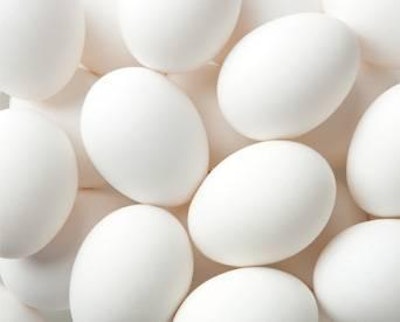
A prediction made by a geneticist that by 2050, laying hens would routinely lay 500 saleable eggs by 100 weeks of age with a feed conversion around 1.1 without being molted became one of the discussion points recently at Alltech’s International Poultry Forum. The audience was asked to participate in what was termed a “Yale-style debate” and the microphone moved around the room as ideas were exchanged on what steps, beyond waiting for genetic selection to work its magic, egg producers can take to work toward these bird performance goals.
Improving shell quality
There seemed to be a consensus that the current shell quality on non-molted birds won’t allow for the hens to be kept in production out to 100 weeks of age. It was stated that genetic selection will have to be for both persistence of lay and good egg shell quality. One member of the audience said that nutrition, gut health and disease control are all important for maintaining flocks in production out to 100 weeks.
A veterinarian said that proper nutrition is important for maintaining the function of the shell gland, and he recommended use of bioplexed minerals to support the function of the oviduct and shell gland. One producer from Ireland said organic trace minerals do make a difference, and that they start using them at 45 weeks of age.
Improving feed conversion
There was a lively discussion on where feed conversion can be improved for layers and broilers. A broiler producer said that improving the quality of feed ingredients could improve feed conversion, but it was stated that feed ingredient quality wasn’t as crucial for layers. To explain the difference between the two types of chickens, one audience member said, “Layers are marathon runners and broilers are sprinters.”
It was stated that laying hens do better with byproducts, such as bakery meal, distillers' grains and meat and bone meal, included in large amounts in rations than broilers. A broiler producer said he is amazed that some layers do as well as they do with the large amount of byproducts incorporated in the rations.
“We are not feeding chickens anymore, we are feeding an ecosystem,” said Dr. Peter Ferket, professor, North Carolina State University. He explained that recent work has shown that things like particle size of ingredients in the finished ration can have a big impact on how the feed is digested and utilized in the gut of the bird. Just as larger-size particles of limestone can improve egg shell quality, increased particle size for corn in the ration is showing an improvement in feed conversion and affecting the type of bacteria found in the bird’s gut. He said there is a lot to learn in this, but some may not be easy to implement.
Performance starts in the hatchery
A broiler producer said single-stage hatcheries improve feed conversion of the resulting chicks. It wasn’t clear whether the same statement could be made about layers.
In ovo feeding may have some real value when the technology is cheap enough, according to Dr. Ferket. He said that what you “feed” the bird while it is still in the shell can turn on or off specific genes which prime the bird before it gets to the farm. He suggested that producers might develop in ovo feeding regimes that prime a broiler for muscle growth or a layer or breeder bird for egg laying.
Another egg producer stressed that what happens to hens in the pullet house still plays a key role in getting maximum performance out of hens in the layer house.

















